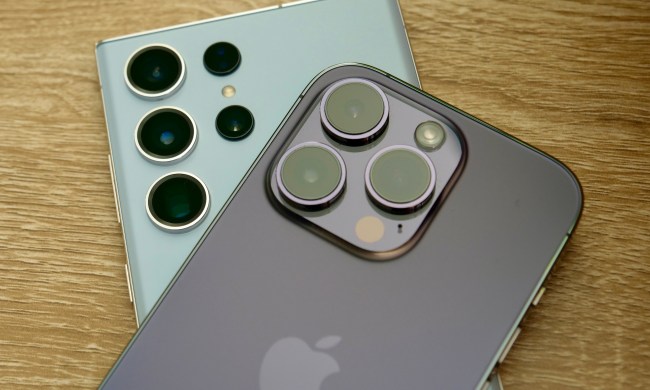When we reviewed the DxO One camera earlier this year, one feature it lacked was Wi-Fi. Granted, the camera, which uses a large 1-inch sensor and offers DSLR-like functionality, is designed to connect directly with an iPhone or iPad — via the Lightning connector — using the iOS device as a live-view display and controller. Unbeknownst to us at the time, the camera actually had a dormant Wi-Fi transceiver, which DxO will turn on through a firmware update for existing owners in September. With the wireless connection, users can operate the camera remotely with their iOS device.
It’s a bit of a surprise, Kirk Paulsen, DxO’s consulting chief marketing officer, told Digital Trends. The wireless connection lets users easily set up the camera for selfies or group portraits, or any shooting situations where remote shooting is more ideal. Turning on Wi-Fi pairing is simple: Attach the camera to the iPhone or iPad, set it to Wi-Fi mode (the camera handles the Wi-Fi authentication, so there’s no need to go into the phone or tablet’s Wi-Fi settings menu), and detach when prompted. The camera can connect to a Wi-Fi network (perfect for setting it up as a security or conference camera, provided it has continuous power), or make a direct Wi-Fi connection with an iOS device.
We asked Paulsen if the Wi-Fi connection means the camera could now work with other phones and tablets — namely, Android. Right now, the DxO One remains part of the iOS ecosystem, and requires an iOS device with Lightning connector to activate. It’s possible that this may be a future feature — Paulsen said the company has plans to unlock new features every quarter — but Paulsen told us that DxO is satisfied with it being an iOS-only accessory right now.
The version 2.0 update also implements a new user interface in the DxO One iOS app. Users now have access to all shooting settings, in one icon tap at the top of the screen. Battery life is also improved thanks to an added autofocus mode that minimizes the movement of the focus motor, resulting in up to 20 percent in savings, Paulsen said. There’s a new underwater white balance option to compensate for the blue cast, and Mobile Smart Lighting that gives photos the effect you would get when using a fill light by improving the dynamic range. And, you can edit RAW images even more within the app.
In addition to the software upgrade, DxO is also introducing a new hardware accessory that gives the DxO One some action cam attributes. Created from users’ request, the Outdoor Shell is an underwater housing that provides rugged protection. It’s submersible down to 150 feet (that’s where the new underwater white balance mode comes in handy), and shock and dust resistant. You can swap out the removable back door for one that is splash proof (not submersible), which gives you access to the camera’s controls. An ingenious dial at the front turns the camera on and off, and switching LCD view is as easy as covering the lens with your hand. The Outdoor Shell costs $60, and is available in seven colors.
Besides the Outdoor Shell, you can now buy an optical adapter ($25) that snaps onto the front of the lens, which lets you add neutral density and creative filters, macro lenses, and hoods. There’s also a handy stand ($25) for propping up the camera, and a zipped pouch ($20) for storing and carrying the camera. All these accessories can be purchased at retailers or through the DxO One app. The accessories will be available in September. The camera itself remains at $499, and is available at Best Buy and Target, among other retailers.

